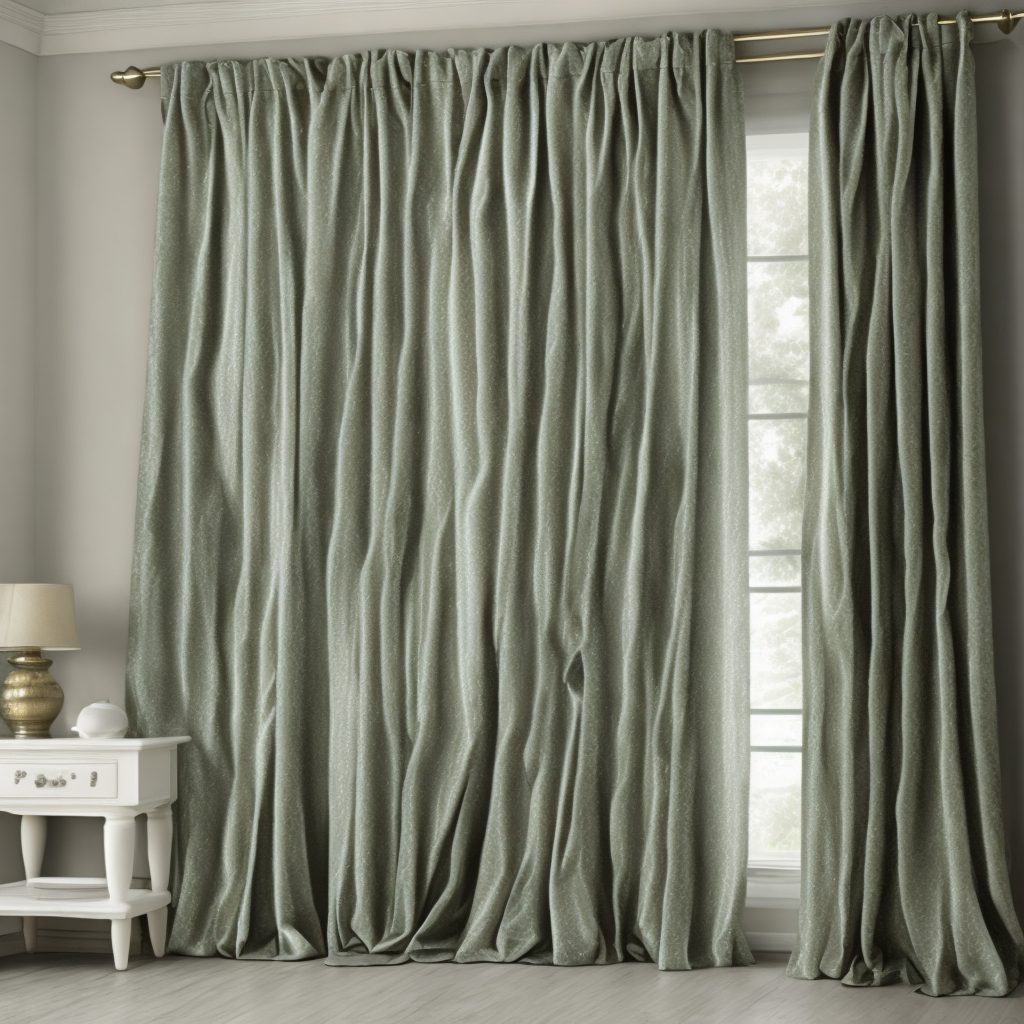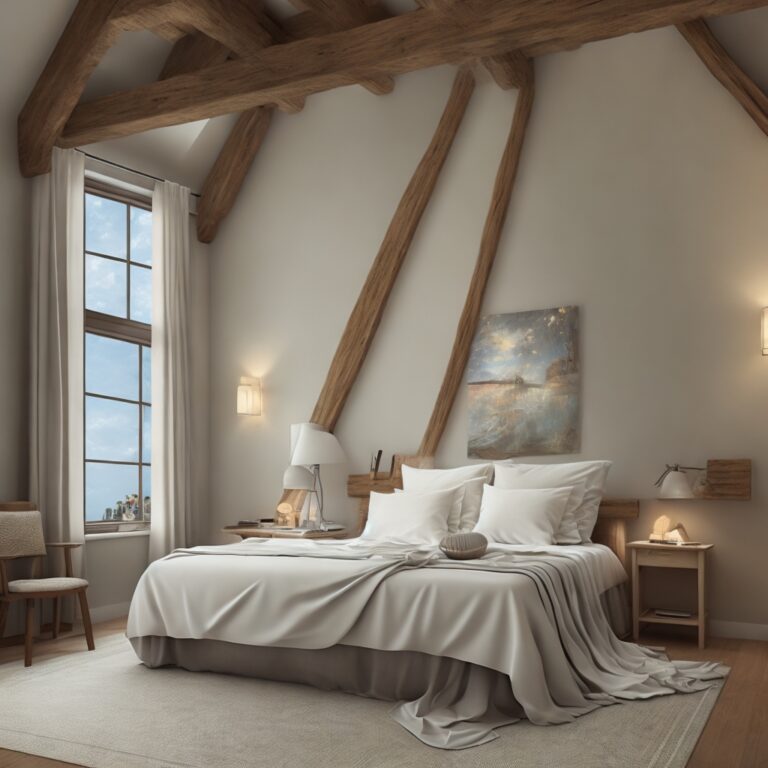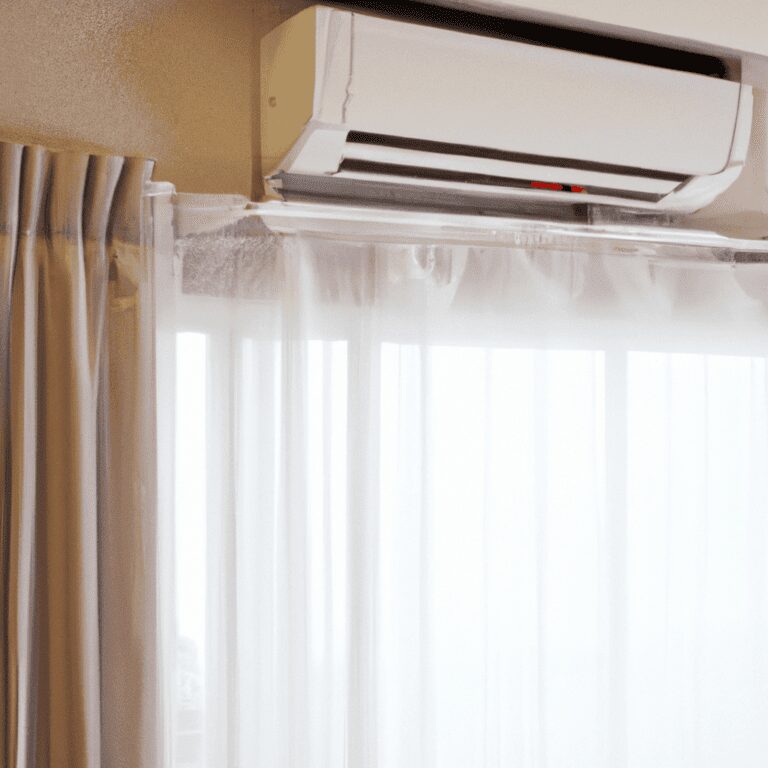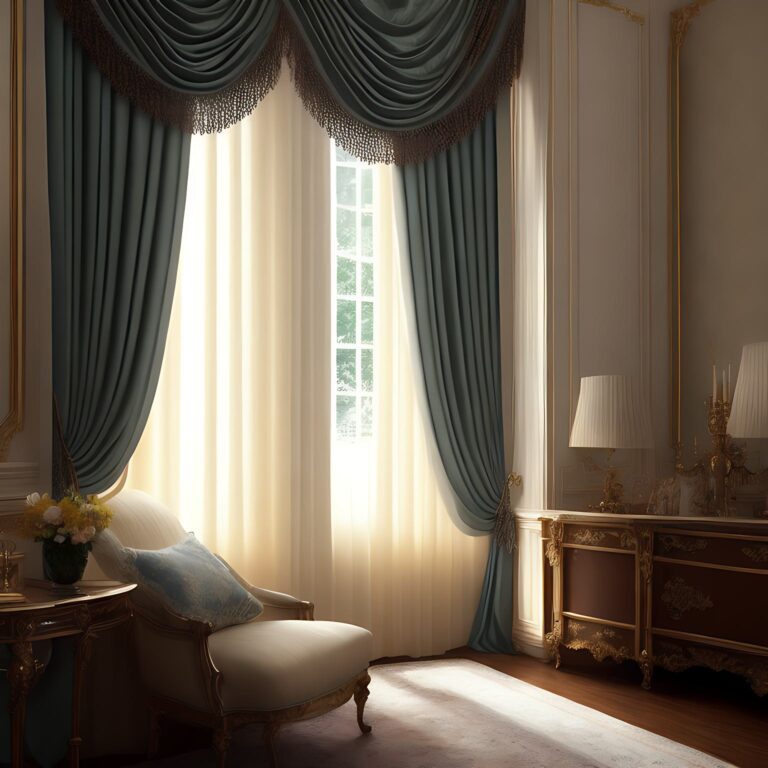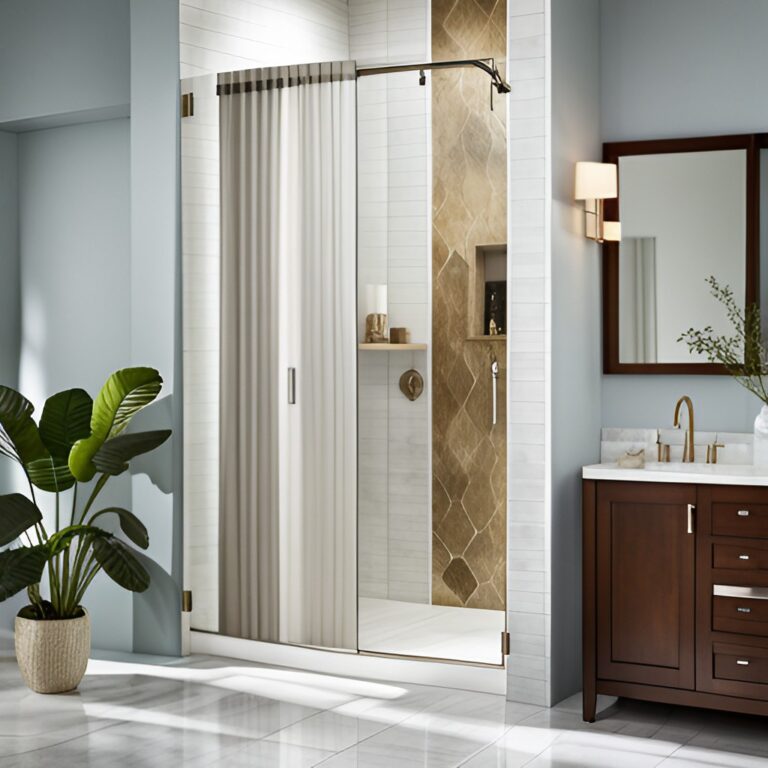The Ultimate Easy Guide: How to Measure Windows & Rods for Curtains
The perfect window curtains can make or break the look of a room. To achieve the desired style and aesthetic, it is essential to get accurate measurements for both your windows and rods. This guide will show you step-by-step how to measure windows & rods for curtains so that you can create an eye-catching display in any space.
Having proper measurements is important as they contribute to a perfect fit when it comes time to hang up your curtains. Accurate measurements ensure that your curtain panels will be the right size, length, and shape while also making sure that the window rod is correctly installed. With this guide, you’ll learn how easy it is to take these necessary steps toward achieving the perfect result!
Understanding Curtain Measurements
Understanding Curtain Measurements is an important step when it comes to buying curtains for your home. There are two key measurements to consider: width and length. Depending on the size of the window, the curtains may need to be wider or longer than others. In addition, the measurement units used must also be taken into account. Most common measurement systems are in inches, centimeters.
Key Measurements to Consider
- Width: The horizontal measurement of the window or the space you want to cover with curtains.
- Length: The vertical measurement from the top to the desired endpoint of the curtains.
Different Measurement Units Used
- Inches: Commonly used units of measurement in the United States and some other countries.
- Centimeters: Widely used units of measurement in many parts of the world.
Tools and Materials Needed
When it comes time to measure windows & rods for curtains, you’ll need a few tools and materials. Before getting started, make sure that you have the following items:
- Tape Measure
- Pencil
- Notepad or Paper
- Step Ladder (if necessary)
Measuring Window Width

When measuring window width, the first step is to measure the exact width of the window frame across the top. This will give you an accurate measurement of the entire window and should be done from edge to edge. It is important to note that this measurement should not include any trim or molding.
For more irregularly shaped windows, such as arched or bay windows, measuring tape should be used in a few different places to determine an average width measurement. The measurements should always be taken from side to side and not up and down as this can lead to inaccurate measurements. In addition, it is important to remember that for a full curtain effect, you will need to add at least 1/4 inch onto either side of your measurements for extra fabric.
Measuring Window Height
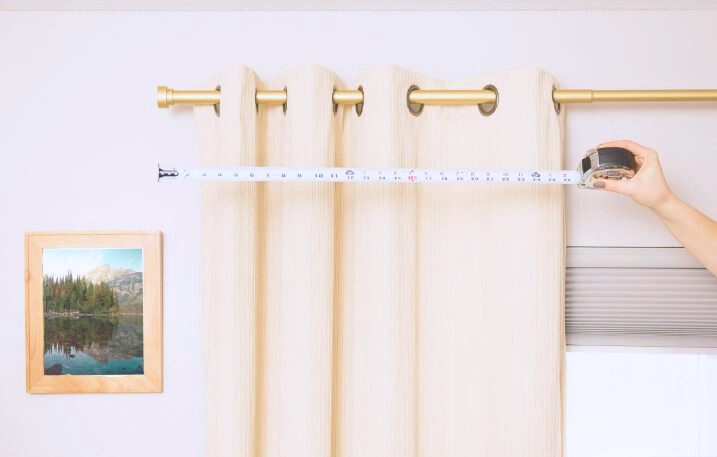
Accurately measuring the height of your window is a crucial step in achieving the perfect curtains. To begin, grab a measuring tape and measure from the top of the window frame down to your desired curtain length. It’s important to consider that depending on the type of curtain rod you intend to use, you might need to add extra fabric to ensure proper installation. This additional fabric allows for the appropriate coverage and ensures that the curtains hang elegantly.
For standard-size curtains, a general rule of thumb is to measure about one and a half times longer than the window frame itself. If you’re using tab top curtains or valances that hang from a rod, you’ll need to add at least 6 inches above the window frame to allow for proper hanging and draping.
When measuring curtains of varying lengths, there are several factors to consider. For a traditional look with full-length curtains that gracefully touch the floor, measure from the top of your window frame down to just slightly above your flooring or baseboard trim (around 1/2 inch).
If you prefer more modern options like cafe curtains or tiers, you can adjust the measurements accordingly by opting for shorter lengths that don’t reach the floor. Moreover, if you fancy bathroom-style curtains with special hardware that cover only a portion of the window frame, take into account any moldings, trims, or fixtures near your windows that might obstruct light or interfere with the curtains.
When measuring the window height, start by measuring the exact height of the window frame from top to bottom. This will provide an accurate measurement of the entire window and should be done from edge to edge, excluding any trim or molding.
Next, consider the length of your curtain panels when determining how high above the windowsill they should hang. For longer curtain styles, it’s recommended to hang them slightly higher than the actual window height to ensure complete coverage and create a more dramatic effect.
On the other hand, if you prefer shorter curtain panels, you can opt for a lower installation to achieve a less formal look while allowing more natural light to enter the room. Additionally, if your curtains are intended for an area with higher ceilings, it’s advisable to purchase longer curtains to avoid unsightly gaps between them and the ceiling molding.
Determining Curtain Fullness
Determining the fullness of curtains involves considering several crucial factors. To gauge curtain fullness, we examine the ratio between the finished fabric width and the actual window width. This ratio is typically expressed as a percentage, and the higher the percentage, the more abundant and opulent the curtains appear. Standard curtain fullness usually falls within the range of two to four times the window width, but heavier fabrics may necessitate up to seven times for a more striking impact.
However, when dealing with lighter or sheer fabrics, a lower percentage may be appropriate to allow ample natural light into the room and maintain a modern aesthetic. Tab-top curtains or those hung on decorative rods typically require only one-and-a-half times fullness, as they aren’t typically gathered when hung. On the other hand, curtains with pleats or draperies incorporating accessories like tiebacks usually benefit from two-and-a-half times fullness to achieve a luxurious look without seeming overly heavy or dense.
Remember to factor in an additional 10% to your measurements to account for potential fabric shrinkage or stretching over time due to temperature or humidity changes in your home. By keeping these guidelines in mind, you can easily determine the ideal curtain fullness for any style of window treatment you desire.
Measuring Curtain Width
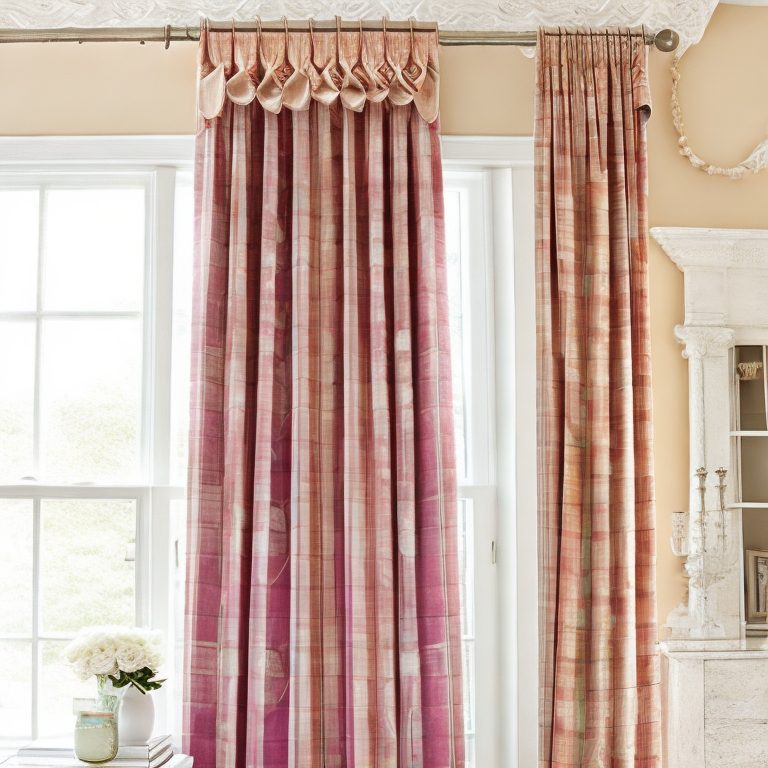
When it comes to determining the width of your curtains, precision is key. To achieve a perfect fit, it’s crucial to measure from the outer edges of the window frame, encompassing any trim or molding that surrounds it. Additionally, take into account other elements like fixtures that may obstruct light or interfere with the draperies. For a more expansive and luxurious feel, particularly in wider windows or spacious rooms, consider adding an extra 6-8 inches to each side. This subtle adjustment will create a fuller effect without overwhelming the overall aesthetic.
In addition, when selecting a specific curtain style, such as a tab top, grommet top, rod pocket, or pinch pleat style, it is necessary to adjust your measurements accordingly. Generally speaking, tab-top curtains require 1/2 inch more than the actual window width while grommet-top curtains require 1 inch more than the measured window width for the fabric to fit through the grommets properly.
Rod pocket and pinch pleat styles also require extra fabric but in varying amounts depending on how full you would like your curtains to be. Generally speaking, two-and-a-half times more fabric than the window size is enough for a luxurious look without appearing heavy or dense. Finally, when measuring for gathered styles such as ruffles and valances, 1/2 inch should be added for every foot of desired gathered length for optimal results.
Measuring Curtain Length
When measuring the length of curtains, it is essential to consider the desired look and the specific curtain style you are using. For standard floor-length curtains, it is recommended to measure from the top of the window frame down to just slightly above your flooring or baseboard trim (approximately 1/2 inch). This measurement will accurately determine the desired overall length for a traditional look with curtains that gracefully touch the floor.
For more contemporary options like cafe curtains or tiers, you can make adjustments by measuring shorter lengths that do not extend to the floor. Additionally, when it comes to bathroom-style curtains that come with special hardware, it’s important to consider how much of the window frame they should cover. These measurements should also take into account any moldings, trims, or fixtures near your windows that could potentially block out light or interfere with the proper installation.
When measuring for gathered styles such as ruffles and valances, 1/2 inch should be added for every foot of desired gathered length for optimal results. This will ensure full coverage while still creating a visually pleasing effect without appearing too heavy or dense. It is also important to add additional fabric when measuring for these styles to allow for proper installation and adjustment after hanging.
Measuring Curtain Rod Length
Measuring for curtain rods, it’s crucial to consider the length of the rod and any accompanying accessories like brackets or finials. To ensure a perfect fit, it is recommended to measure from one end of the window frame to the other. Before purchasing a curtain rod, make sure to double-check the measurements and add an extra inch or two on each end to accommodate any finials or hardware that will be attached.
If you are looking for a more modern look, you can opt for adjustable hanging options such as telescoping rods which allow you to customize your window treatment by simply adjusting the length of each side individually. Alternatively, if you are looking for something more unique, there are also various decorative rods available with varying sizes and shapes that may require additional measurements depending on your desired style.
In addition, when selecting a specific style of curtains, such as tab-top curtains or those hung on decorative rods, it is necessary to adjust your measurements accordingly. For tab-top curtains, subtract an inch from each side of the window frame measurement while decorative rods may require up to four inches less than the actual width for them to fit properly around hardware features. Finally, when installing draperies with accessories like tiebacks or rings, be sure to add enough extra length to your measurements for them to overlap correctly without appearing too tight or loose once hung up.
How Do You Measure What Size Curtains You Need?

The size of the curtains you need depends on several factors, including the size and style of your window, the desired fullness of your curtains, and any additional hardware or accessories that you may be using. To determine an ideal curtain width and length for a standard window treatment, start by measuring from the outer edges of the window frame. Then add 6-8 inches to each side for wider windows or larger rooms, as well as extra fabric to accommodate any pleats, tiebacks, grommets, or other hardware.
When choosing curtain lengths for floor-length styles, measure from the top of the window frame down to just slightly above your flooring or baseboard trim (about 1/2 inch). For shorter styles like cafe curtains or tiers, adjust accordingly to the desired lengths. When measuring for curtain rods, measure from one end of the window frame to the other to determine the perfect fit, and add an extra inch or two on each end for any finials or hardware that will be attached. Lastly, be sure to double-check all measurements before purchasing curtains or curtain accessories to achieve a proper fit once hung up.
How Do I Know What Size Curtains To Buy?
Before purchasing curtains or curtain accessories, it is important to double-check all measurements to achieve a proper fit once hung up. To determine the ideal size for your window treatment, start by measuring from the outer edges of the window frame and add 6-8 inches to each side for wider windows or larger rooms. Additionally, when choosing a specific style of curtains such as tab tops or those hung on decorative rods, be sure to adjust your measurements accordingly.
For floor-length styles like standard draperies, measure from the top of the window frame down to just slightly above your flooring or baseboard trim (about 1/2 inch). For shorter styles like cafe curtains or tiers, adjust accordingly to the desired lengths.
Common mistakes to avoid
- Not measuring both width and length
- Ignoring the curtain fullness factor
- Forgetting to account for curtain rod brackets
- Overlooking the importance of curtain length
- Not accounting for curtain hemming
- Neglecting the type of curtain rod
Frequently Asked Questions
How do I measure the width of my windows for curtains?
To measure the width, measure the inside of the window frame for an inside mount or the outer edges of the frame for an outside mount. Measure from left to right and round it to the nearest inch or centimeter.
What is the standard curtain length for different window types?
The standard curtain length varies depending on the window type. For floor-length curtains, measure from the top of the window frame to the floor. For sill-length curtains, measure from the top of the window frame to the windowsill. Other options include apron-length curtains and puddle-length curtains, which can be customized based on personal preference.
Should I measure the inside or outside of the window frame for curtain width?
Whether to measure the inside or outside of the window frame depends on personal preference and the desired look. For a cleaner, streamlined appearance, measure the inside of the frame. If you want the curtains to extend beyond the frame and cover more of the wall, measure the outside edges.
How do I determine the fullness of the curtains I need?
The fullness of curtains refers to the amount of fabric used in relation to the window width. A general rule of thumb is to use 1.5 to 2 times the width of the window for a standard fullness. For a more luxurious look, use 2.5 to 3 times the window width.
How high should I hang my curtains above the window frame?
For an aesthetically pleasing look, hang curtains 4 to 6 inches above the window frame. This creates an illusion of taller windows and allows more natural light to enter when the curtains are open.
Can I use the same curtains for different window sizes?
It depends on the difference in window sizes. If the difference is minimal, you may be able to use the same curtains by adjusting the width or length. However, for significant variations, it’s best to have separate curtains for each window or consider custom-made curtains.
How do I calculate the fabric yardage needed for my curtains?
To calculate the fabric yardage, multiply the desired fullness factor by the width measurement. Divide the result by the width of the fabric bolt (typically 54 inches or 137 cm). Round up the final value to the nearest whole number to determine the number of fabric panels needed.
Can I order custom-made curtains based on my measurements?
Yes, many curtain suppliers offer custom-made curtains based on specific measurements. You can provide your measurements, and choose the fabric, style, and other details to create curtains that perfectly fit your windows.
Conclusion
In this comprehensive guide, we have covered everything you need to know about measuring windows and rods for curtains. By understanding the key measurements, selecting the appropriate measurement units, and following the step-by-step instructions, you can ensure that your curtains fit perfectly and enhance the aesthetics of your space.
We have also highlighted common mistakes to avoid, such as neglecting to measure both width and length, overlooking the importance of curtain fullness, forgetting to account for curtain rod brackets, and more. By being aware of these potential pitfalls, you can achieve accurate measurements and avoid disappointment when it comes to hanging your curtains.
Remember, accurate measurements and properly fitting curtains can transform your space, providing privacy, controlling light, and adding a touch of style. Take the time to measure carefully, consider the factors discussed, and don’t hesitate to seek professional guidance or consult with curtain suppliers if needed.

I am Stacy Roberts, an experienced curtains expert. I spend most of my time writing about curtain design for various magazines and websites, including writing many blog posts on the topic for Homepicks24.com. I love helping people find the perfect curtains for their homes and take great pride in my work. When I'm not writing or helping people choose curtains, I enjoy spending time with my wife and two young children. I also love playing tennis and going to the beach. I believe that having a beautiful home with well-chosen curtains is essential to creating a special atmosphere of comfort and serenity, and thus I strive to help people find the right window treatment for their homes.

